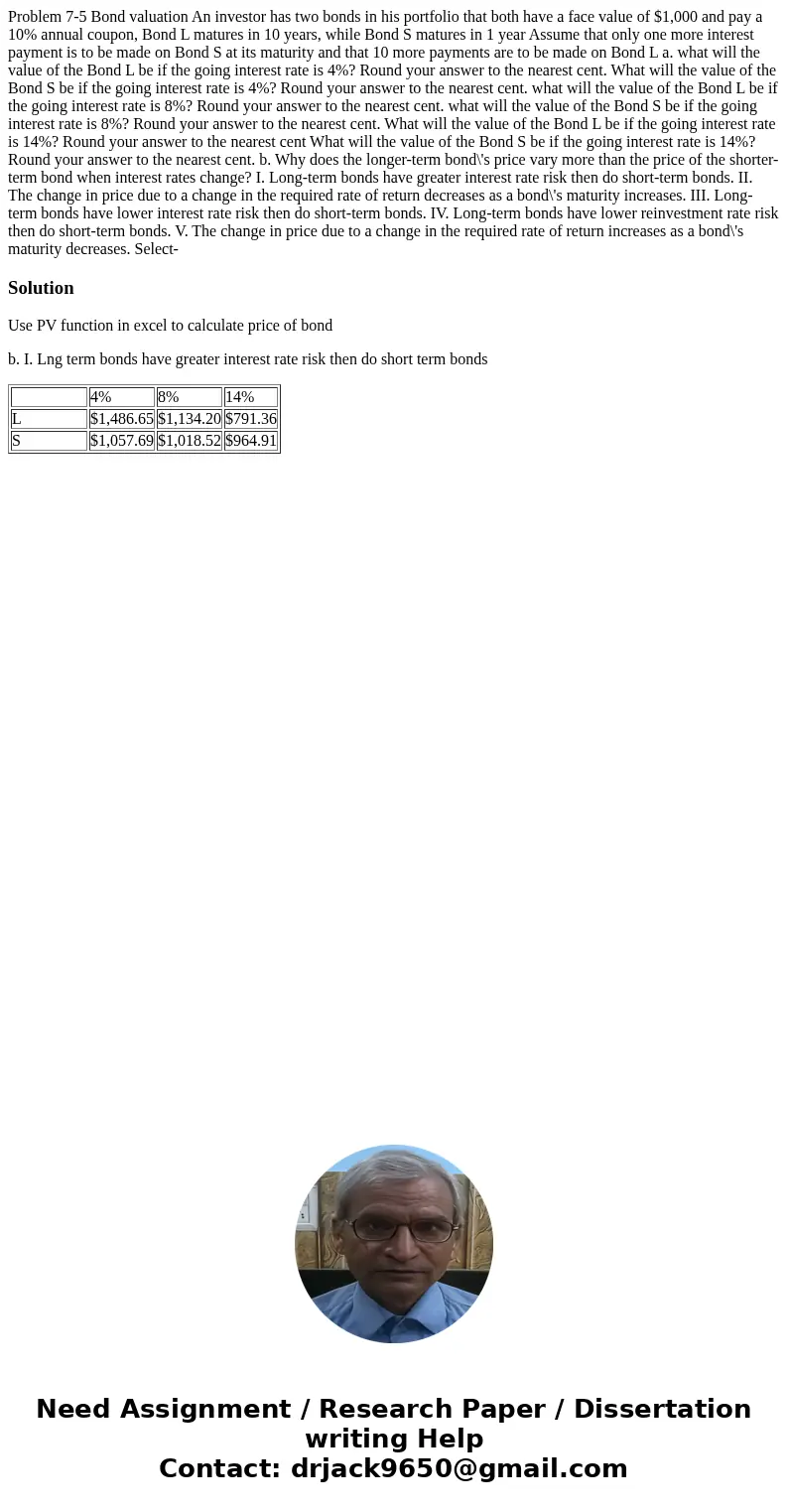Problem 75 Bond valuation An investor has two bonds in his p
Problem 7-5 Bond valuation An investor has two bonds in his portfolio that both have a face value of $1,000 and pay a 10% annual coupon, Bond L matures in 10 years, while Bond S matures in 1 year Assume that only one more interest payment is to be made on Bond S at its maturity and that 10 more payments are to be made on Bond L a. what will the value of the Bond L be if the going interest rate is 4%? Round your answer to the nearest cent. What will the value of the Bond S be if the going interest rate is 4%? Round your answer to the nearest cent. what will the value of the Bond L be if the going interest rate is 8%? Round your answer to the nearest cent. what will the value of the Bond S be if the going interest rate is 8%? Round your answer to the nearest cent. What will the value of the Bond L be if the going interest rate is 14%? Round your answer to the nearest cent What will the value of the Bond S be if the going interest rate is 14%? Round your answer to the nearest cent. b. Why does the longer-term bond\'s price vary more than the price of the shorter-term bond when interest rates change? I. Long-term bonds have greater interest rate risk then do short-term bonds. II. The change in price due to a change in the required rate of return decreases as a bond\'s maturity increases. III. Long-term bonds have lower interest rate risk then do short-term bonds. IV. Long-term bonds have lower reinvestment rate risk then do short-term bonds. V. The change in price due to a change in the required rate of return increases as a bond\'s maturity decreases. Select-

Solution
Use PV function in excel to calculate price of bond
b. I. Lng term bonds have greater interest rate risk then do short term bonds
| 4% | 8% | 14% | |
| L | $1,486.65 | $1,134.20 | $791.36 |
| S | $1,057.69 | $1,018.52 | $964.91 |

 Homework Sourse
Homework Sourse